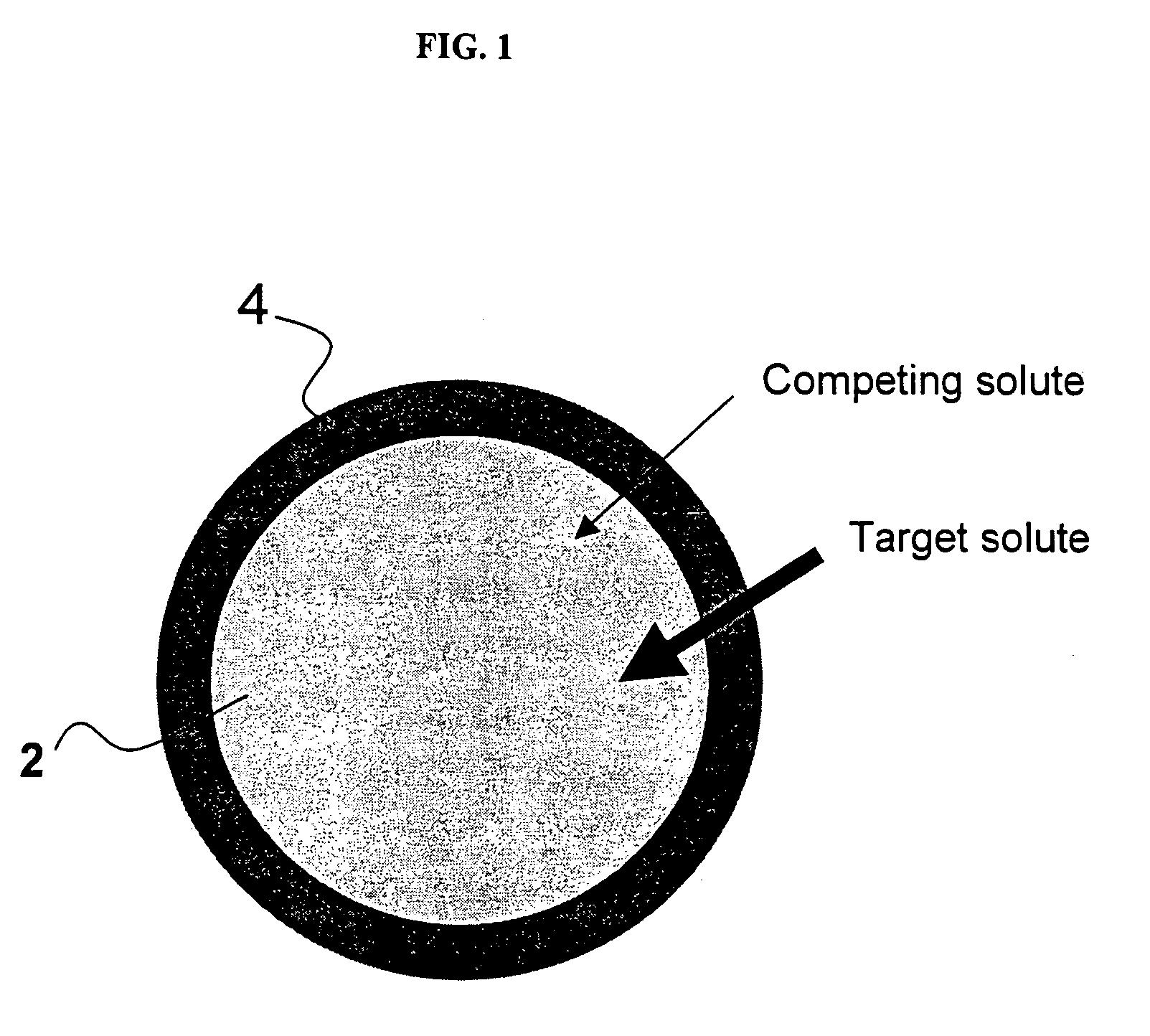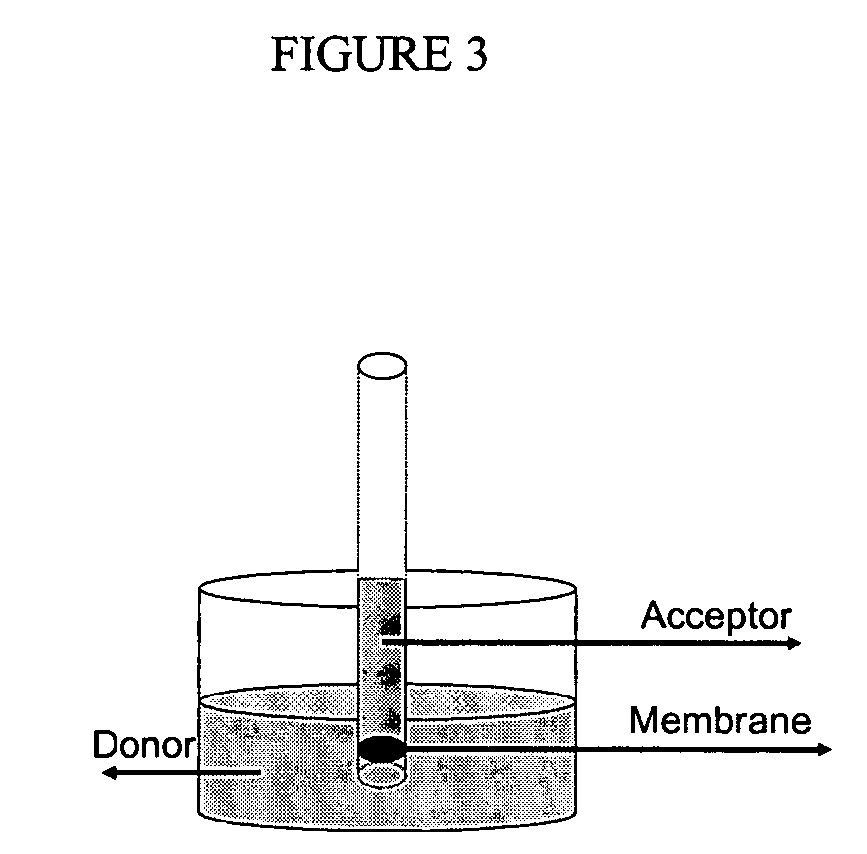Ion binding compositions
a composition and ion technology, applied in the direction of synthetic polymer active ingredients, microcapsules, capsule delivery, etc., can solve the problems of high serum phosphate concentration and high calcium x phosphate product, low binding capacity, and patients' risk of coronary calcification, so as to improve the permeability of the shell component
- Summary
- Abstract
- Description
- Claims
- Application Information
AI Technical Summary
Benefits of technology
Problems solved by technology
Method used
Image
Examples
example 1
Synthesis of Core-Shell Crosslinked Polyallylamine Particles
[0133] In this process, spherical particles were formed by an inverse suspension procedure wherein a prepolymer (polyallylamine) is crosslinked with epichlorohydrine. A block copolymer was used to impart mechanical stability to the droplets during the crosslinking reaction and provide a shell membrane chemically anchored to the core particle.
General Procedure for Block Copolymers Synthesis
[0134] The block copolymers were prepared by RAFT living free radical polymerization method, using a dithiocarbazide compound as a reversible chain transfer agent (CTA) and a diazonitrile free radical initiator (AMVN) indicated below:
Synthesis of Poly(n-butyl acrylate-co-t-butyl acrylate) First Block
[0135] n-Butyl acrylate (25 g, 195 mmol) and t-butyl acrylate (25 g, 195 mmol) were combined with the CTA (173:1 Monomer:CTA, 616 mg, 2.26 mmol)) and AIBN (18.6 mg, 0.113 mmol). The monomer to CTA ratio is fixed so that the theoretical nu...
example 2
Synthesis of 1,3-Diaminopropane / epichlorohydrin Crosslinked Beads (Referred to herein as: Bead-Pi-4-s)
[0144] The reaction vessel used was a 3-liter, three necked round bottom flask with four side baffles, equipped with an oil heating bath, cold-water reflux condenser, and mechanical stirrer with a 3 inch propeller. To this reaction vessel is introduced a solution of 1,3-diaminopropane (90.2 g, 1.21 mole) dissolved in 90.2 g of water, surfactant (branched dodecylbenzene sulfonic acid sodium salt, 6.4 g dissolved in 100 g of water), and 1 Kg of toluene. This initial charge is agitated to 600 rpm for 2 minutes and then lowered to 300 rpm for 10 minutes before the first addition of epichlorohydrin. This speed is maintained through out the experiment. The solution was heated to 80° C. and maintained at this temperature throughout the experiment.
[0145] Into a separate vessel, a 40 mass % solution of epichlorohydrin in toluene was prepared. Using a syringe pump, 1.2 equivalents of epichl...
example 3
Preparation of ethyl cellulose shell / 1,3di-amino propane epichlorohydrine Crosslinked Core Particle
[0148] The beads obtained from Example 2 are spray-coated with an ethyl cellulose polymer shell using a Wurster fluid bed coater 2″-4″ / 6″ Portable Unit. The fluidized bed unit is operated so that an average 5 microns thick coating is deposited on the core particles, using a 30wt-% solid aqueous emulsion (Aquacoat®D ECD, FMC corp.).
PUM
| Property | Measurement | Unit |
|---|---|---|
| concentration | aaaaa | aaaaa |
| molecular weight | aaaaa | aaaaa |
| molecular weight | aaaaa | aaaaa |
Abstract
Description
Claims
Application Information
 Login to View More
Login to View More - R&D
- Intellectual Property
- Life Sciences
- Materials
- Tech Scout
- Unparalleled Data Quality
- Higher Quality Content
- 60% Fewer Hallucinations
Browse by: Latest US Patents, China's latest patents, Technical Efficacy Thesaurus, Application Domain, Technology Topic, Popular Technical Reports.
© 2025 PatSnap. All rights reserved.Legal|Privacy policy|Modern Slavery Act Transparency Statement|Sitemap|About US| Contact US: help@patsnap.com



